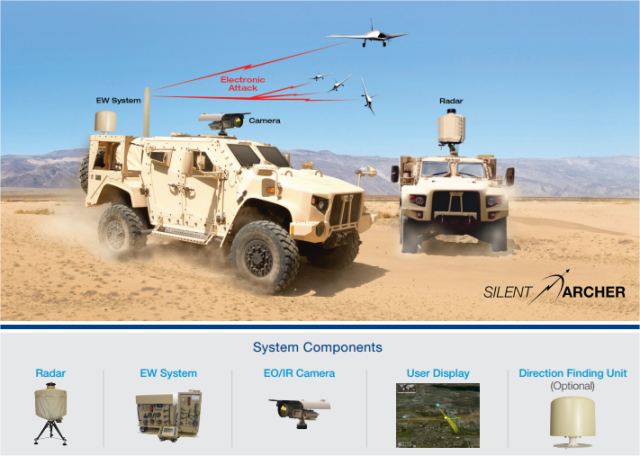|
|
|||
|
Defense & Security Industry News - SRC
|
|||
|
|
|||
|
Company SRC will provide U.S. Army with an integrated counter-UAV system.
|
|||
|
SRC has been awarded a $65M contract to provide the U.S. Army with an integrated counter-UAS system to meet an urgent requirement to detect and defeat drones. The majority of this work will be performed by SRC with work also being performed by teammate, DRS. SRC's scope of work includes engineering, production, and sustainment.
|
|||
|
|
|||
 The operationally ready, field-proven, Silent Archer counter-UAS system detects, tracks, classifies, identifies and disrupts low, slow and small airborne threats. The operationally ready, field-proven, Silent Archer counter-UAS system detects, tracks, classifies, identifies and disrupts low, slow and small airborne threats. |
|||
|
|
|||
|
"Central New York has become a hub for Unmanned Aircraft Systems innovation and manufacturing, and SRC is a leader in this field," said U.S. Rep. John Katko. "This investment will help support the Army in combating the ever-evolving threats that we face, while creating a significant number of high-tech jobs in our region's growing UAS industry."
As a result of this award and other recent wins, the company is actively hiring more than 50 engineers in Central New York. SRC anticipates continued growth in several technology areas, requiring an additional 300 employees nationwide over the next three years.
"We are proud to partner with the Army to provide critical technology that will defend against evolving threats like small drones," said Paul Tremont, president and CEO of SRC. "This contract is a great example of the innovative solutions our employees create."
SRC's Silent Archer counter-unmanned aircraft system (UAS) offering combines proven, TRL 8/9 radar and electronic warfare (EW) systems, camera and a 3-D user display to defeat hostile drones, whether a lone target or a UAS swarm. It provides spatial, frequency and optical surveillance capabilities to detect, track, classify and identify the airborne threat. It then applies low-cost, low risk electronic methods to disrupt the UAS, such as jamming the communications links between the operator and the aircraft. |
|||
Company SRC will provide U.S. Army with an integrated counter-UAV system 10302172
- Posted On














